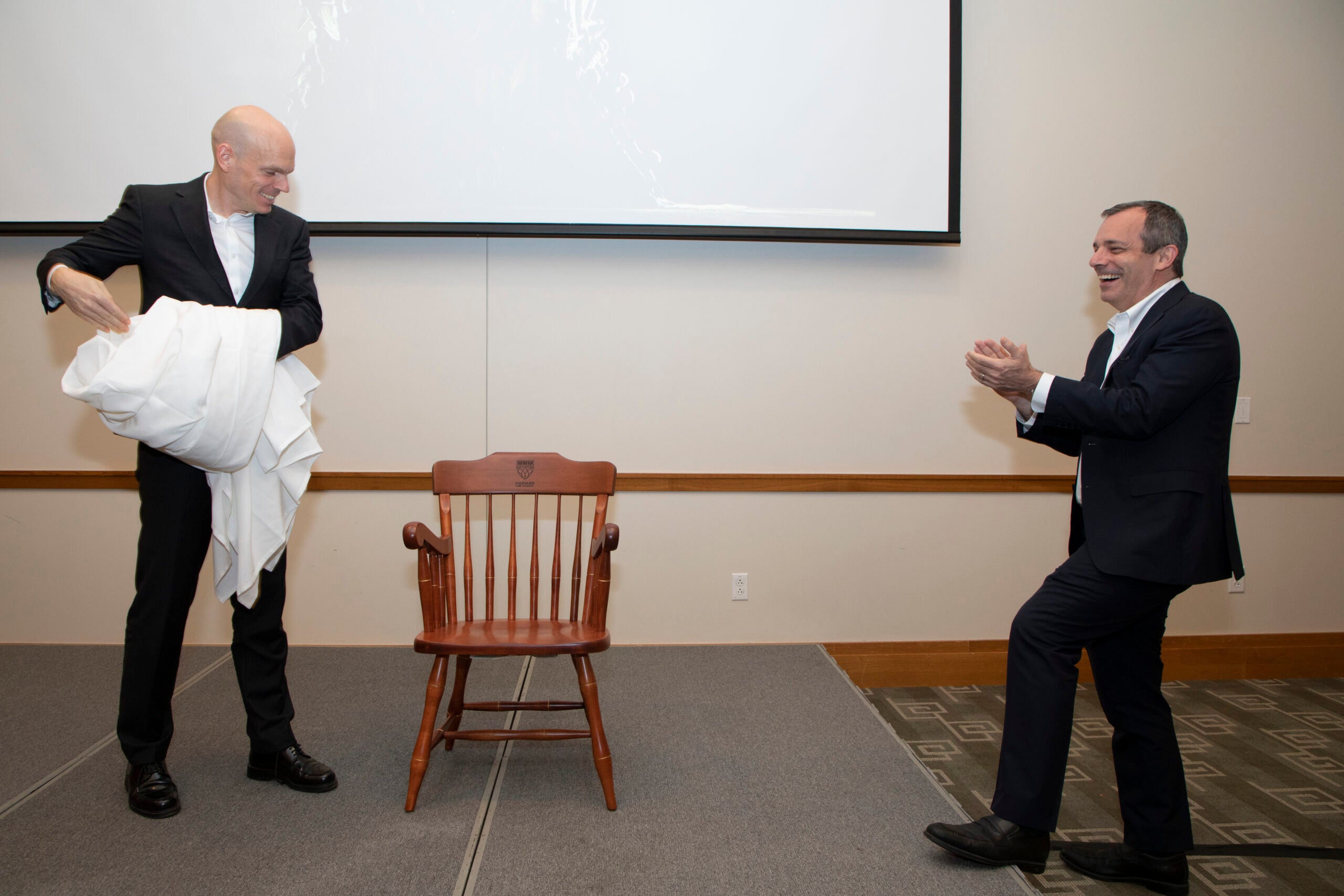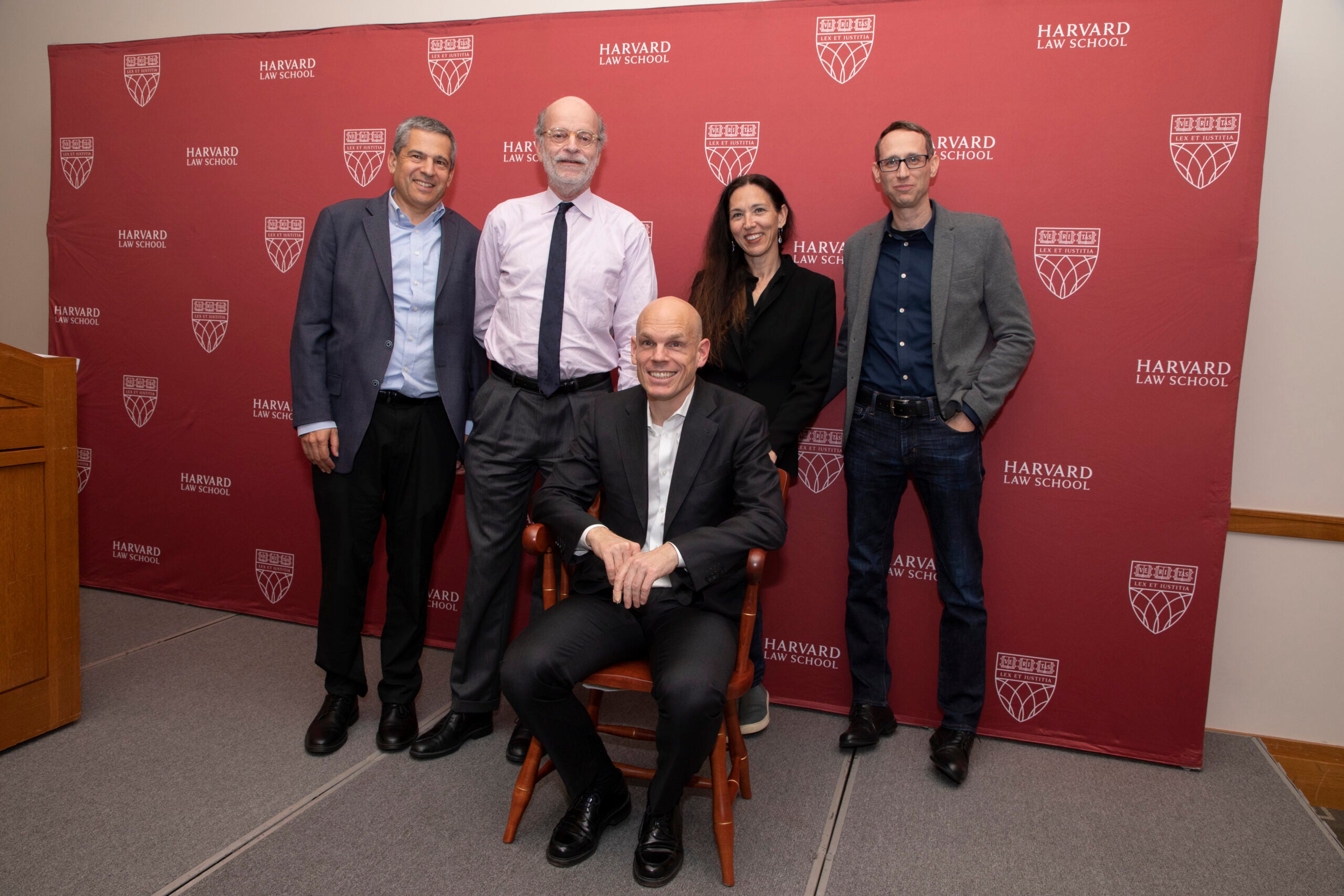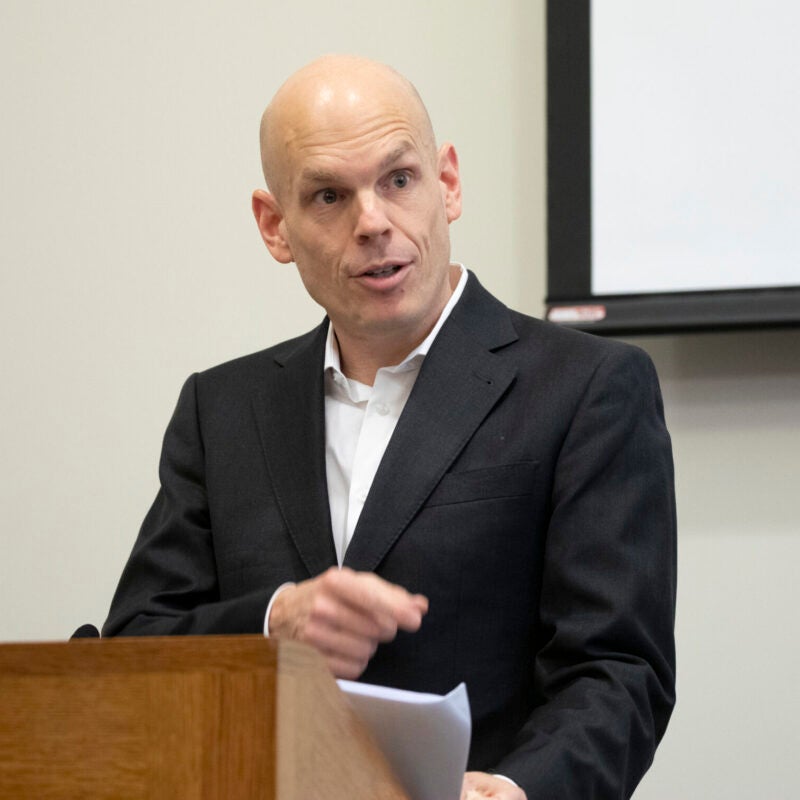What are the real differences between common and civil law systems? Probably not the ones lawyers typically think about, said Harvard Law School Professor Holger Spamann S.J.D. ’09 last week. To commemorate his appointment as Lawrence R. Grove Professor of Law, Spamann examined the myths and reality of common and civil law, the two most widely used legal systems in the world.
Those myths include the widespread idea that common law — rooted in England and also practiced in the United States — involves precedent, or deference to previously published judicial opinion, while civil law, practiced in much of Europe and elsewhere in the world, does not.
As a lighthearted way to show how reasonable but mistaken assumptions lead to myths, Spamann displayed a now-famous photo of England’s new monarch King Charles III sitting on a throne of gold. Adding that many who see it believe the photo is from the king’s coronation, Spamann said it had in fact been taken several months before Queen Elizabeth’s death. “The actual throne that he sat on [for coronation] looked more like a pompous living room chair. But people just imagine that there has to be a fancy throne, so they believe this. I would say that common and civil law myths arise the same way.”
He defined common and civil law as legal systems of, or influenced by, England and continental Europe respectively. The latter’s center of gravity moved over time from Italy to France and Germany. England began to centralize its courts by the late 11th century, but was never completely isolated from European influence. Likewise, European courts were influenced by England — and by extension precedent, said Spamann, noting: the frequent citing of the English case Hadley v. Baxendale (1854) in common law countries around the world, and their adopting of English legal terminology and even the wearing of wigs.



“Expert comparatives haven’t believed” that civil law excludes the use of precedent “for a very long time,” said Spamann. “Nonetheless, half the published articles that mention precedent in connection with civil law, assert that civil law doesn’t have it.” It is easy to dispel that myth, he said, displaying a photo of Grüneberg, a German commentary on the German civil code. “It has three thousand pages and weighs a hefty five pounds. And what’s in it? Mostly precedents.”
Another mistaken idea is that Article Five of the French civil code prohibits judicial precedent — yet the article, Spamann pointed out, is itself annotated with precedents in the standard French edition of its civil code. He also referenced a quote from John P. Dawson’s seminal book “Oracles of the Law,” which states that the same respect for precedent exists in U.S. and German law. And as further confirmation, Spamann cited his own research, which showed that German courts overruled precedents about as frequently as English ones, and that both cited previous cases nearly as often.
And what of the belief among some that common law systems allow for the flexible interpretation of facts, while civil law is rule-based and rigid? Spamann cited the landmark English company law decision of Salomon v. Salomon (1896) — which stated that “the sole guide must be the statute itself”— as evidence that English law could also be unbending.
Spamann acknowledged that it would be just as easy to find cases that supported the conventional wisdom — the reality, he said, is never that clear cut. He pointed to Jand’heur v. Aux Galeries Belfortaises (1930), a consequential case that ushered in strict liability for vehicle accidents in France. Yet despite its import, the opinion itself is just three dense, cryptic sentences long. However, “it’s absolutely clear that the judges who decided this case were thinking about much more than they wrote,” he said.
All of this, Spamann said, should not imply that both legal systems are the same. “I’m not saying that there are less differences than the common/civil law myth suggests. But I think there are different differences.”
A major one is the appointment of judges: Under common law, judges are usually appointed after successful legal careers, while civil law jurisdictions tend to appoint graduates straight out of university. This, he said, can affect a judge’s worldview. If you’re an English judge who’s been a barrister, you are likely also a homeowner or an employer. But a young French judge may only have been a tenant and an employee. “I can’t help thinking that has an impact on how you relate to consumer, landlord/tenant, and employment law disputes.”
Another big difference is about who goes to law school. The United States, he said, is a “complete outlier” in that it was until recently the only country where law school entailed a graduate education. And in the U.S., Spamann added, law school is considered a more desirable career than in some European countries, which leads to “different systems and a different self-image.”
